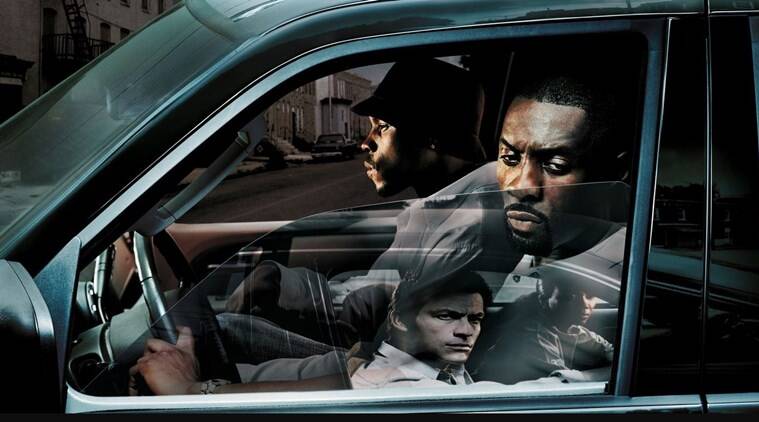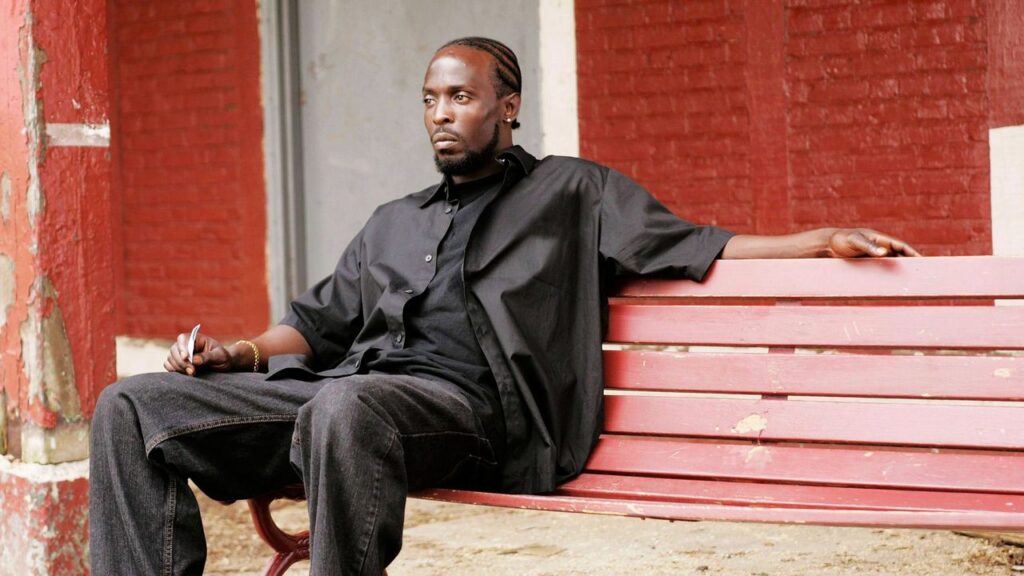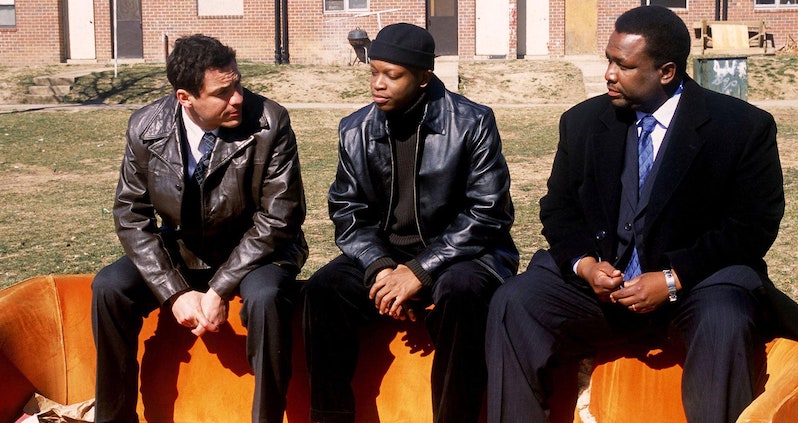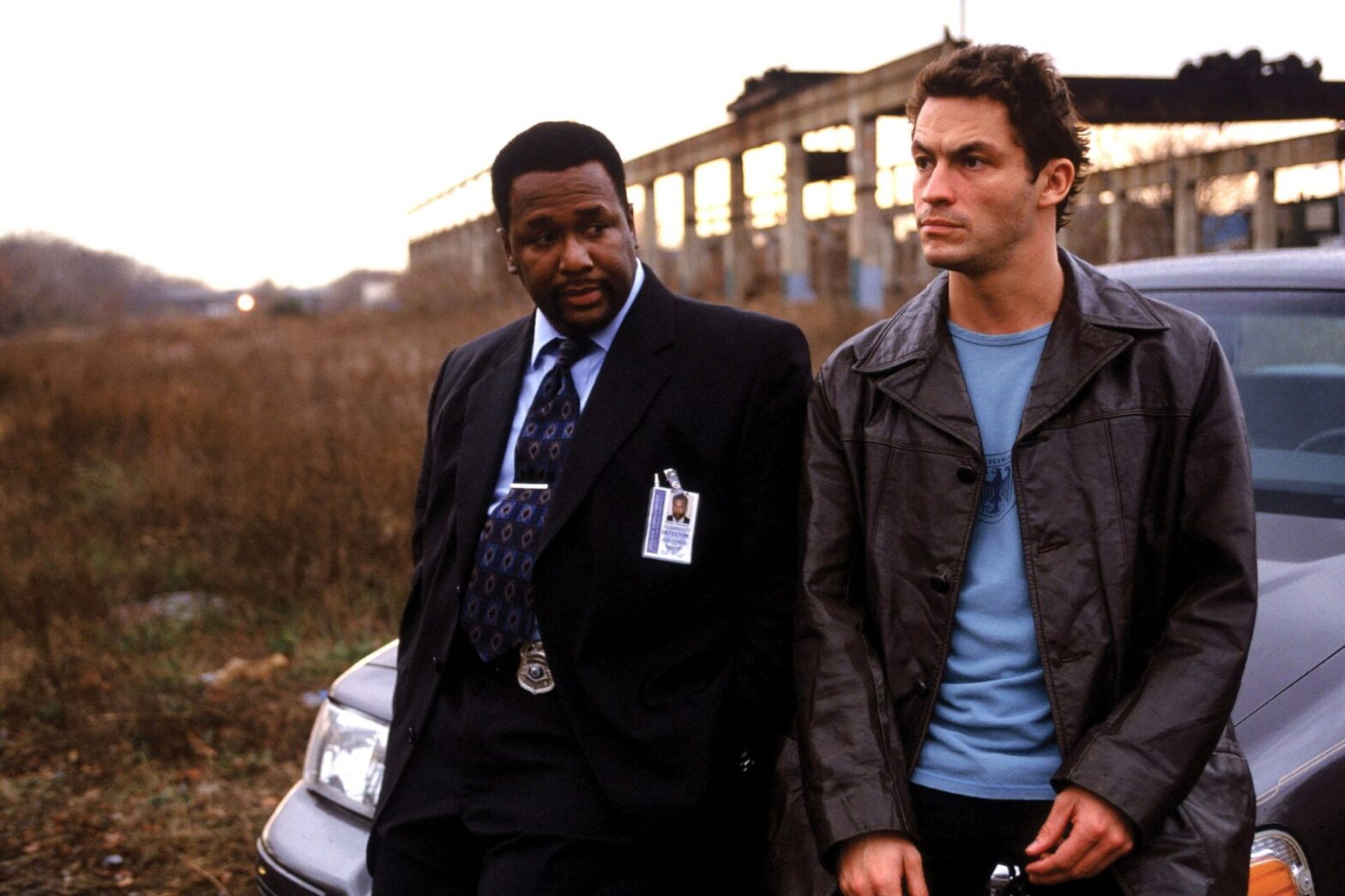“The Wire,” an acclaimed television series created by David Simon, serves as a mirror reflecting the intricacies of Baltimore’s sociopolitical landscape. Set against the backdrop of a city grappling with systemic issues of poverty, crime, and institutional dysfunction, the show delves deep into the lives of its characters, offering viewers a gritty and unflinching portrayal of urban life. Through its nuanced storytelling and complex characters, “The Wire” transcends the confines of traditional crime dramas, providing a profound commentary on the complexities of power, corruption, and the human condition.
If you appreciate the multifaceted storytelling in “The Wire,” you’ll likely find a parallel appreciation for the diverse messages conveyed through men’s patriotic t-shirts which serve as subtle expressions of societal values and identity.
Exploring Urban Decay

One of the central themes explored in “The Wire” is the concept of urban decay and its far-reaching consequences. The show meticulously depicts the decline of Baltimore’s neighborhoods, illustrating how economic disinvestment, political neglect, and social fragmentation have ravaged communities. From abandoned homes to dilapidated schools, the physical decay mirrors the societal decay that permeates every aspect of life in the city. Through its vivid portrayal of desolate streets and neglected institutions, “The Wire” shines a spotlight on the harsh realities faced by residents living on the margins of society.
Just like the show unravels the complexities of Baltimore’s societal dynamics, the best beauty salon in Toronto intricately navigates the diverse beauty preferences of its clientele.
Furthermore, “The Wire” highlights the interconnectedness of various social institutions and their role in perpetuating urban decay. From the police department to the school system, from the political arena to the media, the show explores how systemic failures and institutional inertia contribute to the cycle of poverty and violence gripping Baltimore. By exposing the dysfunction and corruption within these institutions, “The Wire” challenges viewers to confront uncomfortable truths about the systems that govern our society.
Politics and Power Dynamics
At the heart of “The Wire” lies a searing critique of political power and its impact on marginalized communities. The show delves into the murky world of politics, illustrating how politicians often prioritize their self-interests over the needs of their constituents. Through characters like Mayor Tommy Carcetti and Councilman Clarence Royce, “The Wire” portrays the ruthless pursuit of power and the compromises made at the expense of the city’s most vulnerable residents. Moreover, the show examines the symbiotic relationship between politics and crime, showcasing how corruption permeates every level of government.
The “The Wire” is even more captivating if you have the best cookies and cream edibles to eat while watching.
Additionally, “The Wire” explores the complexities of power dynamics within communities, depicting the struggles for control and influence among various factions. From drug kingpins vying for territory to community activists fighting for social change, the show captures the diverse array of voices clamoring to be heard in a city plagued by inequality and injustice. Through its portrayal of grassroots organizing and collective action, “The Wire” offers a glimmer of hope amidst the chaos, suggesting that meaningful change is possible when communities unite against common adversaries.
Challenging Social Norms
Moving beyond the confines of traditional crime dramas, “The Wire” boldly challenges social norms and conventions, pushing viewers to confront uncomfortable truths about race, class, and privilege. Through its diverse cast of characters, the show offers a nuanced exploration of identity and belonging in a city rife with division and inequality. From the streets of West Baltimore to the corridors of power, “The Wire” exposes the ways in which systemic racism and socioeconomic disparities shape the lived experiences of its inhabitants.
The Wire’s in-depth examination of societal issues finds a kinship with the transformative effects of a kambo session in Austin TX, where individuals undergo a personal journey akin to the societal introspection depicted in the show.
Moreover, “The Wire” interrogates the concept of the American Dream and its elusive promise of upward mobility. Despite the prevailing narrative of meritocracy and opportunity, the show illustrates how structural barriers and systemic injustices hinder the aspirations of marginalized communities. Characters like Bubbles, Bodie, and D’Angelo navigate a landscape fraught with obstacles, where the pursuit of the American Dream often leads to disillusionment and despair. Through their stories, “The Wire” challenges viewers to reconsider commonly held beliefs about success and achievement in the face of entrenched inequality.
Media and Misrepresentation

In addition to its exploration of systemic issues, “The Wire” offers a searing critique of media and its role in shaping public perceptions of urban life. Through characters like Gus Haynes, a seasoned newspaper editor, and Scott Templeton, a young and ambitious reporter, the show delves into the ethical dilemmas and professional pressures facing journalists in pursuit of a story. By exposing the sensationalism and distortion prevalent in media coverage of crime and poverty, “The Wire” forces viewers to question the authenticity of the narratives presented to them.
Much like the intricate layers of societal introspection depicted in The Wire, the art of dog grooming in Seattle involves a meticulous understanding of each pet’s individual needs and the broader dynamics of pet care.
Furthermore, “The Wire” highlights the power dynamics at play within the media landscape, illustrating how corporate interests and political agendas influence the dissemination of information. From the manipulation of crime statistics to the demonization of marginalized communities, the show reveals the ways in which media institutions perpetuate stereotypes and reinforce existing power structures. Through its incisive portrayal of media ethics and accountability, “The Wire” challenges viewers to critically engage with the stories they consume and the narratives they perpetuate.
The Human Cost of the War on Drugs
Central to the narrative of “The Wire” is the devastating impact of the war on drugs on individuals and communities. Through characters like Avon Barksdale, Stringer Bell, and Marlo Stanfield, the show depicts the brutal realities of the drug trade and its toll on both the perpetrators and victims. From street-level dealers to high-level traffickers, “The Wire” offers a multifaceted exploration of the motivations and consequences of involvement in the illicit drug economy. Just as The Wire delves deep into systemic challenges, laser therapy in Chicago delves into the intricacies of healing on a profound level.
Moreover, “The Wire” exposes the failures of drug enforcement policies and their disproportionate impact on communities of color. From the aggressive tactics of the police department to the revolving door of the criminal justice system, the show highlights the futility of the war on drugs in addressing underlying social problems. By humanizing characters on all sides of the conflict, “The Wire” challenges viewers to empathize with individuals caught in the crossfire and to reconsider punitive approaches to drug policy.
Community Resilience and Solidarity
Despite the pervasive challenges depicted in “The Wire,” the show also celebrates the resilience and solidarity of Baltimore’s communities. From the grassroots efforts of organizations like the Community Benefits Agreement to the bonds forged among residents in the face of adversity, the show offers glimpses of hope amidst despair. Through acts of kindness, mutual aid, and collective action, “The Wire” illustrates the power of community organizing in effecting meaningful change.
The multifaceted narratives in The Wire, dissecting systemic complexities, align with the strategic services provided by dumpster rental in Emerald Coast, addressing waste challenges in a way that parallels the urban intricacies depicted in the show.
Furthermore, “The Wire” emphasizes the importance of building bridges across social divides and fostering empathy and understanding among diverse groups. Characters like Lester Freamon, Kima Greggs, and Cedric Daniels exemplify the transformative potential of collaboration and cooperation in the pursuit of justice and equality. By highlighting the importance of solidarity in the face of systemic injustice, “The Wire” offers a vision of Baltimore where communities come together to create a more just and equitable future.
Reflections on Urban Realities
As viewers reflect on the sociopolitical landscape of Baltimore depicted in “The Wire,” they are confronted with uncomfortable truths about power, privilege, and the human condition. The show’s unflinching portrayal of urban realities challenges us to critically examine the systems and institutions that shape our lives and to imagine alternative futures where justice and equality are not just aspirations, but realities.
Did you know that the director of “The Wire” hired the best interior designer in Lighthouse Point FL to meticulously craft the show’s iconic sets?
By weaving together diverse narratives and perspectives, “The Wire” invites viewers to engage with the complexities of urban life and to recognize the agency we all possess in shaping our communities and our world. As we grapple with the enduring legacy of systemic inequality, “The Wire” serves as a powerful reminder of the importance of empathy, solidarity, and collective action in the ongoing struggle for social change.
Education and Opportunity
Another vital aspect explored in “The Wire” is the role of education as a pathway to opportunity and social mobility. The show portrays the challenges faced by students in Baltimore’s public schools, where overcrowded classrooms, underfunded resources, and a lack of support contribute to a cycle of academic underachievement. Characters like Prez, a former police officer turned teacher, and Namond, a young student caught between the allure of the streets and the promise of education, highlight the profound impact of quality schooling on the trajectory of young lives.
Shooting a complex series like “The Wire” requires as much as skill as engagement photography in Arkansas.
Moreover, “The Wire” sheds light on the broader structural inequities that perpetuate educational disparities in urban communities. From the legacy of segregation and redlining to the ongoing debates over school funding and resource allocation, the show exposes the systemic barriers that hinder access to quality education for marginalized students. By depicting the struggles of students and educators alike, “The Wire” challenges viewers to confront the inequities embedded within the education system and to advocate for policies that prioritize equity and excellence for all learners.
Environmental Justice and Public Health
In addition to its examination of social and economic issues, “The Wire” delves into the intersection of environmental justice and public health in urban environments. The show highlights the disproportionate burden of pollution and environmental hazards borne by low-income communities of color, where residents are exposed to toxins and pollutants that contribute to a range of health problems. From lead poisoning to air pollution-related illnesses, “The Wire” exposes the human cost of environmental degradation and the failure of regulatory agencies to protect vulnerable populations.
The multifaceted narratives of The Wire, delving into the challenges faced by individuals in a city environment, align with the commitment to holistic well-being seen in veterans health care services in Dallas tx.
Furthermore, “The Wire” explores the connections between environmental injustice and broader patterns of social inequality. Characters like Bunk Moreland, a homicide detective with a keen eye for forensic evidence, and Bunny Colvin, a retired police major turned community advocate, uncover the hidden costs of industrial pollution and corporate negligence in shaping the health outcomes of residents. Through their investigations, the show underscores the urgent need for environmental policies that prioritize the health and well-being of marginalized communities and address the root causes of environmental injustice.
The best Los Angeles magician remarks that “The Wire” is among his favorite TV series of all time.
Technology and Surveillance

One of the more prescient themes explored in “The Wire” is the proliferation of technology and its implications for privacy, surveillance, and civil liberties. Set against the backdrop of the early 2000s, the show anticipates the rise of digital surveillance technologies and their widespread adoption by law enforcement agencies. Characters like Lester Freamon and Cedric Daniels navigate the complexities of modern policing, where advances in surveillance technology blur the line between public safety and individual privacy.
Watching “The Wire” can be tough if you are constantly distracted by the thought of your old house’s structure suddenly collapsing or causing a specific room to fall in. You should not ignore this and should contact the best foundation repair in Fort Worth in order to have this fixed for an amazingly affordable price so that you can enjoy watching the series in peace,
Moreover, “The Wire” raises important questions about the ethics and accountability of surveillance practices in democratic societies. From wiretaps and GPS tracking to facial recognition software and social media monitoring, the show depicts the ways in which surveillance technologies can be both a tool for crime prevention and a threat to civil liberties. Through its exploration of the tensions between security and freedom, “The Wire” challenges viewers to critically assess the implications of surveillance in an increasingly interconnected world.
Conclusion
In conclusion, “The Wire” stands as a groundbreaking work of television that transcends the boundaries of its genre to offer a nuanced and thought-provoking exploration of the sociopolitical landscape of Baltimore. Through its multifaceted storytelling, complex characters, and unflinching portrayal of urban realities, the show invites viewers to engage with the pressing issues facing contemporary society, from systemic inequality and institutional dysfunction to environmental degradation and digital surveillance.
Just as The Wire delves into the intricate dynamics of Baltimore, a long term care pharmacy navigates the nuanced world of healthcare, ensuring patients receive specialized and extended medication services.
As we reflect on the enduring relevance of “The Wire,” we are reminded of the power of storytelling to illuminate hidden truths, provoke critical dialogue, and inspire collective action for social change. In the words of David Simon, the creator of “The Wire,” “All the pieces matter”—and indeed, the lessons gleaned from the show continue to resonate with audiences around the world, challenging us to confront the complexities of our shared humanity and imagine a more just and equitable future for all.

